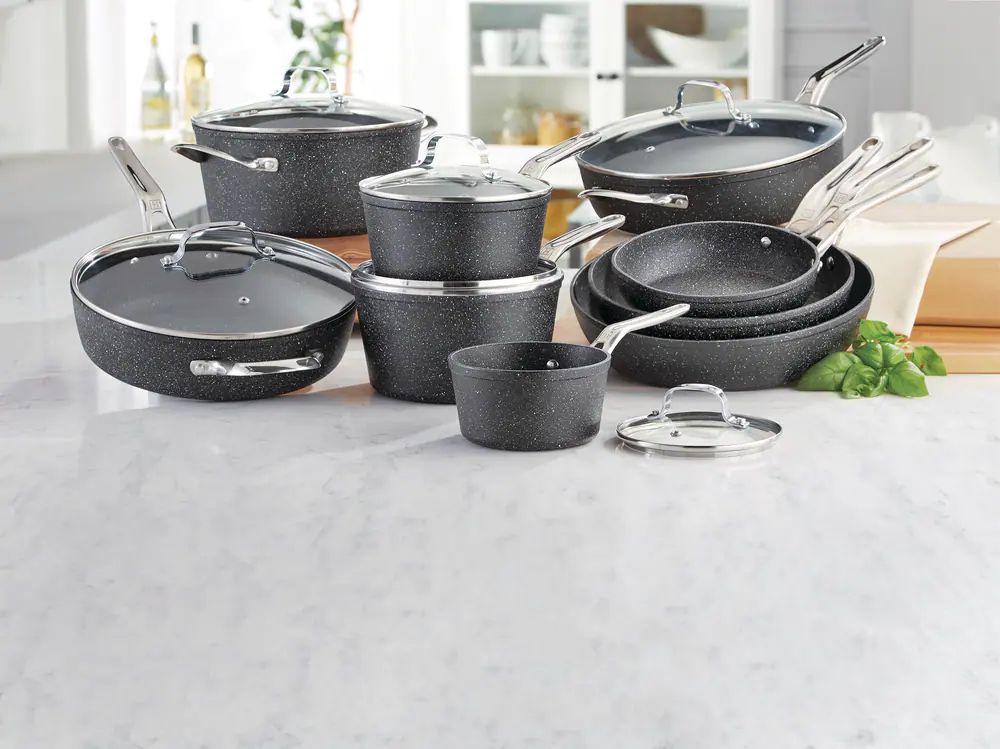Table of Contents
Use these straightforward suggestions to take better care of your non-stick pots and pans.
Have you recently proudly purchased a pricey non-stick pan and are daydreaming about all the delicious and healthful goodies you will prepare in your high-end cookware? But after only a few days, all of your dreams are starting to peel just like the coating on your cookware! You attempt to get in touch with the dealer or manufacturer to have your pan replaced, but they claim they can’t because the warranty only covers material flaws. It’s just as vital to take care of your health as it is to the cooking equipment you use. You are solely responsible for the lifespan of your nonstick cookware. Regarding whether or not to care for your non-stick cookware, there are a lot of conflicting messages. However, some simple maintenance is undoubtedly needed if you want to use your non-stick cookware for a longer period. Here are some simple guidelines for using and caring for non-stick cookware:
Before each use, wash
It’s advisable to wash your nonstick cookware in lukewarm soapy water before using it for the first time. This will get rid of any leftovers, including oil and grime. Before using it to cook meals, thoroughly rinse and dry it.
Additionally, it is important to make sure the cookware is cleaned in the same way each time it is used. Never wash non-stick cookware using abrasive or rough materials like steel wool, stiff brushes, or scorching pads. Cookware will be ruined by these tools because they are rough on the surface.
Tools for using with nonstick cookware
Unknowingly, a lot of individuals use metal utensils in non-stick pans and kadais without thinking. In fact, not all metal utensils should be used because they have sharp edges and could damage your non-stick Kadai and pans by pealing the coating. In nonstick cookware, only use secure tools, such as a wooden spatula or heat-resistant silicone spoons. A single scratch on the coating can cause it to completely peel off and damage your cookware and kadai that are nonstick. In nonstick cookware, only use secure tools, such as a wooden spatula or heat-resistant silicone spoons. A single scratch on the coating might cause the entire non-stick coating to peel off. Safe utensil use can help your non-stick cookware last longer.
Cooking in non-stick pans requires oil.
Labels on non-stick cookware frequently state that no oil or grease is necessary. As a result, health-conscious people prepare food with nonstick cookware without using any oil or grease For cooking, use the right amount of flame.
The majority of non-stick cookware has a coating that cannot resist intense flame. They could be able to withstand an intense flame for a little period, but they should not be exposed to high heat for an extended period. It is advisable to use non-stick cookware and a moderate or low flame when preparing food. Use cookware with a strong anodized surface to protect it from excessive heat and corrosion.
Ensure appropriate storing
If the cookware is not stored properly, all of your efforts to ensure the optimal use of your non-stick cookware will be in vain. Therefore, it is imperative to underline the importance of preserving non-stick cookware correctly.
Non-stick cookware is typically lightweight, inexpensive, and simple to use. They are easier to use than conventional utensils. And if you merely take the time and effort to take care of your non-stick cookware, it may help you make the cuisine of restaurant-quality.
Regular Non-Stick errors
So, to the best of your ability, you may be caring for your non-stick pan. However, is your knowledge current? Are you certain your actions are morally correct?
Let’s look at some typical blunders (unintentional, of course) that could be damaging your nonstick cookware:
- Spraying with cooking oil: Yes. Typically, store-bought cooking spray is incompatible with the non-stick cookware’s cooking surface. Instead, fill the bottle at home with vegetable oil using the Meyer Oil Mister.
2. Preheating the cookware: You’ve probably heard a lot of advice to do this before cooking. but not about cookware.
3. Using high heat: High heat frequently causes coating damage and can release toxic substances.
4. Improper washing can damage the non-stick cookware’s coating over time. Using the wrong sponges (metal), washing them vigorously, or placing them in the dishwasher are all examples.
